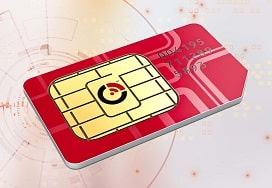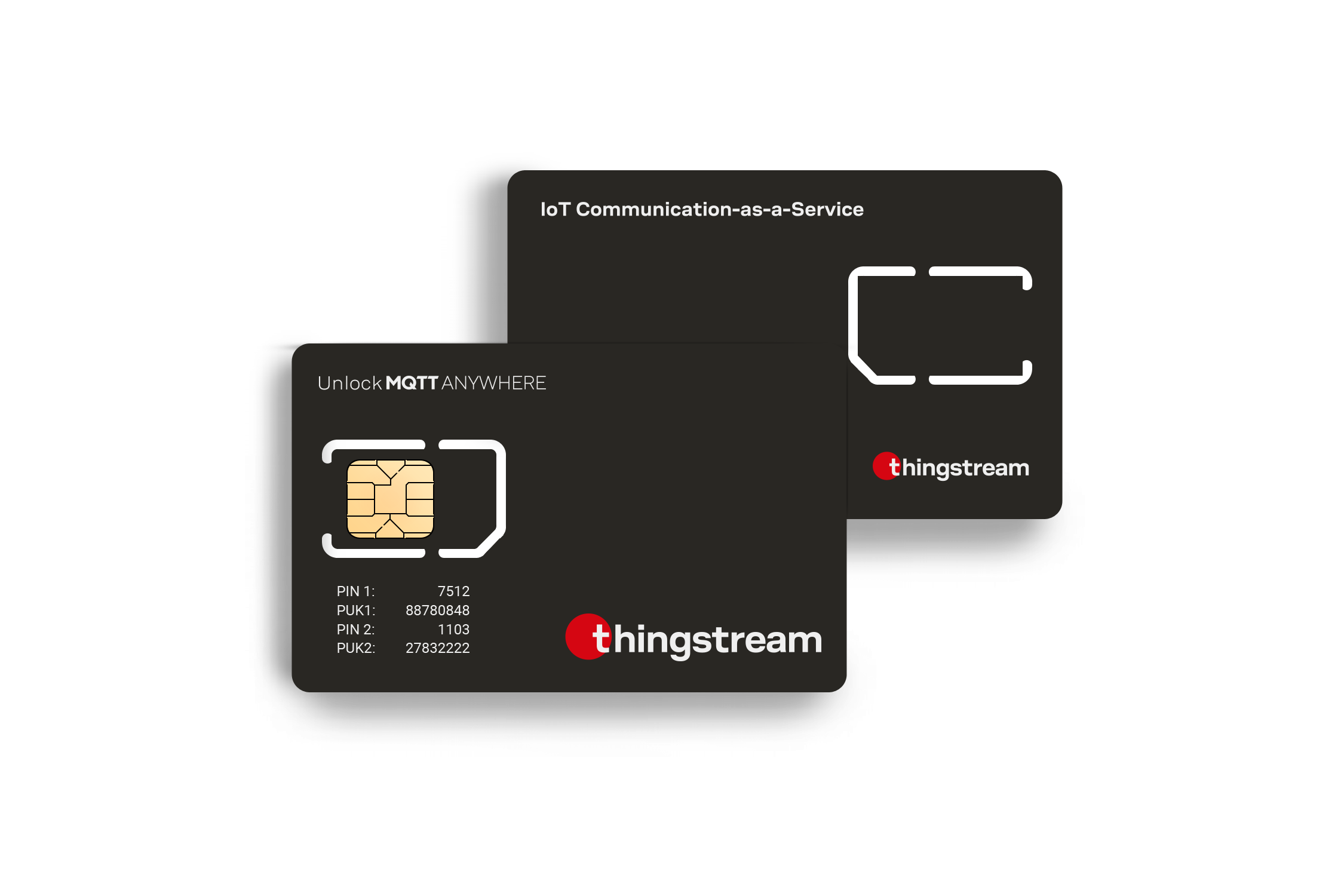Nb-Iot Sim Card IoT M2M SIM Cards Data Plans
The panorama of the Internet of Things (IoT) is marked by a massive number of connectivity standards and protocols designed to facilitate communication between gadgets, applications, and providers - Iot Sim Card India. Each standard addresses specific wants and situations, making it important to compare these protocols based on elements like scalability, range, energy consumption, and application suitability.

IoT connectivity standards embody a massive selection of technologies, including Bluetooth, Zigbee, MQTT, CoAP, LoRaWAN, and cellular protocols corresponding to LTE and 5G. Understanding the strengths and weaknesses of those standards can guide businesses and builders in deciding on the right answer for their functions, finally impacting the efficiency and effectiveness of their IoT ecosystems.
Bluetooth is a widely adopted standard known for its short-range connectivity. Bluetooth Low Energy (BLE) presents lower energy consumption, making it appropriate for battery-operated gadgets. This protocol is particularly efficient for shopper IoT functions, similar to health trackers and smart residence gadgets. However, its limited range can be a significant downside for purposes that require long-distance communication.
Sim Card Iot Devices SIM Providers LTE-M/Nb-IoT Roaming Setup
Zigbee, another in style IoT protocol, is well-suited for mesh networking. This permits units to speak over greater distances by relaying data between nodes. It operates on low energy and is usually used in smart lighting and home automation systems. Zigbee's energy lies in its ability to help numerous gadgets inside a network, making it best for smart constructing purposes.
On the opposite hand, MQTT (Message Queuing Telemetry Transport) is a light-weight messaging protocol designed particularly for low-bandwidth and high-latency networks. It excels in situations where real-time communication is essential, similar to in distant sensor networks or machine-to-machine (M2M) communication. MQTT is designed for efficient message supply, making it a best choice for IoT functions that require immediate information transmission.
Free Iot Sim Card Global IoT ecoSIM Card

CoAP (Constrained Application Protocol) is one other messaging protocol tailor-made for constrained units on lossy networks. It is usually utilized in purposes with strict requirements regarding energy utilization and data overhead. CoAP operates over UDP, which permits low-latency communication, making it best for real-time data switch in smart city functions and industrial automation.
LoRaWAN (Long Range Wide Area Network) serves a special purpose, focusing on low-power, long-range communication. Hologram Iot Sim Card. It is particularly efficient for IoT applications that must cover giant geographic areas, corresponding to agricultural sensors or city-wide monitoring methods. LoRaWAN networks can assist hundreds of devices, providing scalability that many other protocols could lack.
Cellular networks, particularly LTE and 5G, provide a strong connectivity option for IoT devices requiring high bandwidth and low latency. 5G is designed for massive IoT implementations with low latency, enabling real-time communication for functions similar to autonomous vehicles and smart healthcare. However, the worth of cellular connectivity could be prohibitive for smaller initiatives, making it important to judge the price range alongside technical necessities.
Sim Card Per Iot IoT SIM card

Security is another crucial consideration within the comparison of IoT connectivity standards. Each protocol has its own strategy to knowledge encryption and system authentication. MQTT, as an example, can benefit from SSL/TLS encryption, whereas CoAP presents Datagram Transport Layer Security (DTLS). Ensuring robust security measures is significant, significantly in situations involving sensitive knowledge, corresponding to health monitoring.
Interoperability is a major problem in the IoT domain, as myriad devices and platforms often utilize different protocols. Ensuring compatibility between numerous methods can complicate implementation. Some standards, corresponding to Zigbee and MQTT, present bridges or gateways that facilitate interoperability with other protocols, enabling more seamless integration within an IoT ecosystem.
Latency and bandwidth necessities vary greatly among different functions. Low-bandwidth, high-latency functions like smart agriculture could discover success with LoRaWAN, while real-time applications corresponding to video surveillance may necessitate high-speed connectivity supplied by 5G. The choice of connectivity protocol should align with the specific necessities of the applying in question to foster optimal efficiency.
Iot Data Sim Card IoT SIM Cards Introductory Guide
Environmental components additionally play a task in determining the most suitable connectivity standard. Urban environments may current challenges for protocols like LoRaWAN as a outcome of obstruction and interference, whereas BLE may battle with distance in large-area deployments. Understanding the bodily environment during which the units will operate is critical for ensuring dependable connectivity.
Deployment situations, whether they contain urban, rural, or industrial settings, significantly affect the selection of connectivity standards. Industrial environments usually necessitate protocols that may handle high-bandwidth information streams, whereas smart house functions might prioritize low-power solutions. Different settings will dictate the parameters of the IoT deployment, necessitating a tailor-made approach.
In conclusion, the comparability of IoT connectivity standards and protocols reveals a diverse array of options, every with its distinct benefits and trade-offs. Understanding the specific needs of an application, together with distance, energy consumption, and data transmission requirements, is crucial in choosing essentially the most applicable standard. The tendencies in the evolving landscape highlight the significance of seamless communication, sturdy safety, and discover this interoperability to create cohesive and efficient IoT ecosystems. As know-how continues to advance, the need for adaptable and scalable options turns into even more pronounced, guiding future developments in IoT connectivity.
- Various IoT connectivity standards, such as Zigbee, Z-Wave, and LoRaWAN, cater to completely different application wants, with Zigbee specializing in short-range low-power communication and LoRaWAN emphasizing long-range capabilities.
copyright Iot Sim Card IoT and M2M SIM Cards
- Bluetooth Low Energy (BLE) is optimal for purposes requiring quick device pairing and minimal power consumption, making it suitable for wearables and short-range smart house units.
- Cellular IoT standards like NB-IoT and LTE-M are tailor-made for devices demanding wider coverage with network reliability, perfect for agricultural and transportation sectors.
- MQTT and CoAP are distinguished software layer protocols for IoT, the place MQTT excels in lightweight message transport whereas CoAP is designed for constrained environments with lower overhead.
- Security stays an important differentiator amongst protocols; for example, Zigbee employs AES encryption, whereas standards like LoRaWAN use end-to-end encryption to protect knowledge integrity.
Sim Card For Iot Devices North America IoT Data Plan
- Some connectivity standards prioritize scalability; as an example, Thread supports mesh networking, permitting multiple units to speak with no central hub, enhancing network resiliency.
- The energy consumption profiles of protocols can differ: LoRaWAN is highly energy-efficient for low-frequency updates, while protocols like Wi-Fi require more substantial energy, making them less suitable for battery-operated gadgets.
- Different protocols may supply varying levels of interoperability; standards like AllSeen Alliance aim to create a unified ecosystem, whereas others may require specific gateways or bridges for cross-standard communication.
Iot Sim Card Uk What is an IoT SIM?
- The alternative of protocol typically is determined by environmental issues, with standards like Zigbee performing nicely in indoor settings because of its robust anti-interference capabilities compared to others like LoRaWAN, which is healthier suited for rural purposes.
What are the main IoT connectivity standards?
The primary IoT connectivity standards embrace MQTT, CoAP, HTTP, LoRaWAN, Zigbee, and NB-IoT. Each standard serves specific use instances, with various levels of effectivity, power consumption, and range, catering to various IoT applications.
copyright Iot Sim Card Why not use consumer SIMs IoT projects
How do I choose the proper protocol for my IoT application?
Selecting the best iot sim card suitable IoT protocol is decided by elements like information quantity, energy consumption, latency requirements, and community topology. Analyzing these elements alongside the specific operational environment will guide you in the path of the most fitted option.
What are the differences between LPWAN and traditional wireless protocols?
Iot Gsm Sim Card SIM cards stopped working IoT Modules
LPWAN (Low Power Wide Area Network) protocols, like LoRaWAN and NB-IoT, give consideration to long-range communication with low energy consumption, making them ideal for battery-operated units. In distinction, traditional wireless protocols like Wi-Fi and cellular offer larger bandwidth and quicker connectivity, but they consume extra energy and have shorter ranges.
Is security a significant concern in IoT connectivity standards?
Yes, safety is paramount in IoT connectivity. Protocols like MQTT and CoAP incorporate security features like authentication and encryption. It's essential to know these options when choosing a protocol to make sure information safety and gadget integrity.
Free Iot Sim Card How regular SIM differs IoT SIM
Can multiple protocols be used in a single IoT deployment?
Absolutely. Many IoT deployments utilize a mix of protocols to optimize performance and coverage. For example, you may use LPWAN for long-range sensor data and Wi-Fi for local, high-bandwidth communication.

What are the advantages of utilizing MQTT over CoAP?
Sim Card Per Iot How regular SIM differs IoT SIM
MQTT is designed for high-throughput messaging and low bandwidth, making it suitable for environments with frequent updates. CoAP, then again, is optimized for constrained gadgets and networks, making them a better fit for certain applications. Choosing between them depends on specific utility necessities.
How does network structure influence IoT protocol choice?
Network architecture affects protocol alternative by dictating factors like vary, scalability, and connectivity. A centralized architecture may profit from protocols like HTTP, whereas a decentralized architecture might lean in the path of MQTT or CoAP for environment friendly message routing.
Are there future developments in IoT connectivity standards?
Iot Gsm Sim Card IoT SIM card
Yes, future tendencies embody increased adoption of 5G technology, enhanced security measures, and interoperability between existing and new protocols. Emerging standards like Matter goal to unify IoT units, making integration and communication extra seamless throughout platforms.